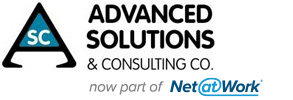Acumatica, maker of the Acumatica cloud Enterprise Resource Planning (ERP) suite, also offers Acumatica xRP, which comprises a Platform-as-a-Service (PaaS). xRP enables developers and partners to create wholly new business applications on the Acumatica platform. The PaaS model can be advantageous for organizations that need unique, purpose-built software but want to avoid the risks involved in developing entire applications from scratch. Acumatica xRP makes this outcome a possibility.
Acumatica xRP also makes it possible for other software companies, so-called Independent Software Vendors (ISVs) to create applications that integrate naturally with Acumatica ERP. xRP can be deployed on any cloud or database. It also works with a variety of software languages. With these characteristics, xRP offers a number of benefits to end users as well as developers.
User benefits
End users are the beneficiaries of the xRP approach to application development, particularly at companies that already use Acumatica ERP. For one thing, the user experience will be broadly comparable as users work across applications developed by different companies. For example, if an ISV creates an application for freight tracking using Acumatica xRP, the software will integrate smoothly into workflows in Acumatica ERP. There will no disruptive toggling back and forth or adjusting to divergent user interfaces. The stability enabled by xRP also benefits users, as they will experience fewer outages and usability issues.
Powerful developer tools and cross-browser Support
Developers have a lot to gain from xRP. For instance, out-of-the-box, Acumatica’s xRP Platform provides powerful tools for developers and supports many developer languages such as Visual Studio, .NET, C#, ASP.NET, and HTML5. And, Acumatica’s xRP Platform is not only flexible in terms of customizing the system to fit any business, but it is also flexible with browser access. The platform is available on any browser—offering developers to work in their preferred environment.
Role-based security
Acumatica’s xRP Platform offers built-in access controls to assist administrators in establishing an initial security layer. User roles can be established within the system to grant or restrict access based on user needs. Roles can be restricted as read-only, or a single employee can be assigned multiples roles to complete necessary job functions.
Multi-tenancy
Acumatica’s xRP Platform can operate as single-tenant or multi-tenant. The platform supports multiple companies, branches, and customers, all within a single platform. ISVs thus gain the option of offering services to multiple customers within a shared environment. The single platform use increases productivity and uses resources more effectively. Companies with multiple branches can view financials and manage all branches more effectively by having one platform to manage all locations.
Mobile framework
Acumatica’s platform uses a mobile framework to deliver tools and build mobile applications. Apps built on xRP PaaS can be accessed at any time, anywhere, and from any device. By improving the timely access to information, managers can make better decisions, improve the overall management and use resources more effectively through built-in business logic.
Versioned Application Programming Interfaces (APIs)
Versioned APIs can help developers adjust to future uses for APIs. Developers can then better handle changes without breaking the code in place. The life of an API can be extended with more effective ways to make changes.
To learn more about the potential of xRP, schedule a free consultation with us.
Additional Acumatica Cloud xRP Resources
7 Benefits of the Acumatica Cloud xRP Platform
Getting the Most Out of ERP: Accessibility, Ease of Use, and Optimization

